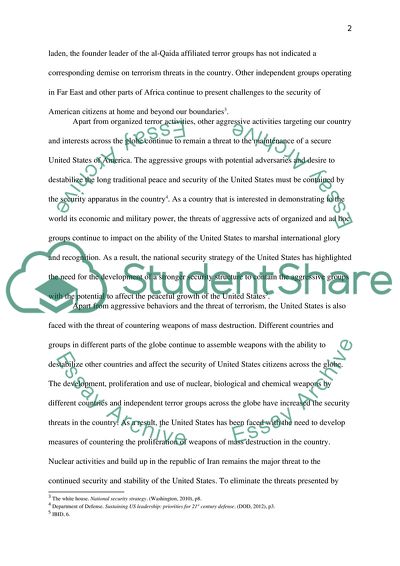Cite this document
(Near and Long Term Security Threats to the United States Coursework Example | Topics and Well Written Essays - 2500 words, n.d.)
Near and Long Term Security Threats to the United States Coursework Example | Topics and Well Written Essays - 2500 words. https://studentshare.org/military/1830097-questions-on-nss-nds-and-future-wars-security-envirnoment-and-probably-engagements
Near and Long Term Security Threats to the United States Coursework Example | Topics and Well Written Essays - 2500 words. https://studentshare.org/military/1830097-questions-on-nss-nds-and-future-wars-security-envirnoment-and-probably-engagements
(Near and Long Term Security Threats to the United States Coursework Example | Topics and Well Written Essays - 2500 Words)
Near and Long Term Security Threats to the United States Coursework Example | Topics and Well Written Essays - 2500 Words. https://studentshare.org/military/1830097-questions-on-nss-nds-and-future-wars-security-envirnoment-and-probably-engagements.
Near and Long Term Security Threats to the United States Coursework Example | Topics and Well Written Essays - 2500 Words. https://studentshare.org/military/1830097-questions-on-nss-nds-and-future-wars-security-envirnoment-and-probably-engagements.
“Near and Long Term Security Threats to the United States Coursework Example | Topics and Well Written Essays - 2500 Words”. https://studentshare.org/military/1830097-questions-on-nss-nds-and-future-wars-security-envirnoment-and-probably-engagements.


